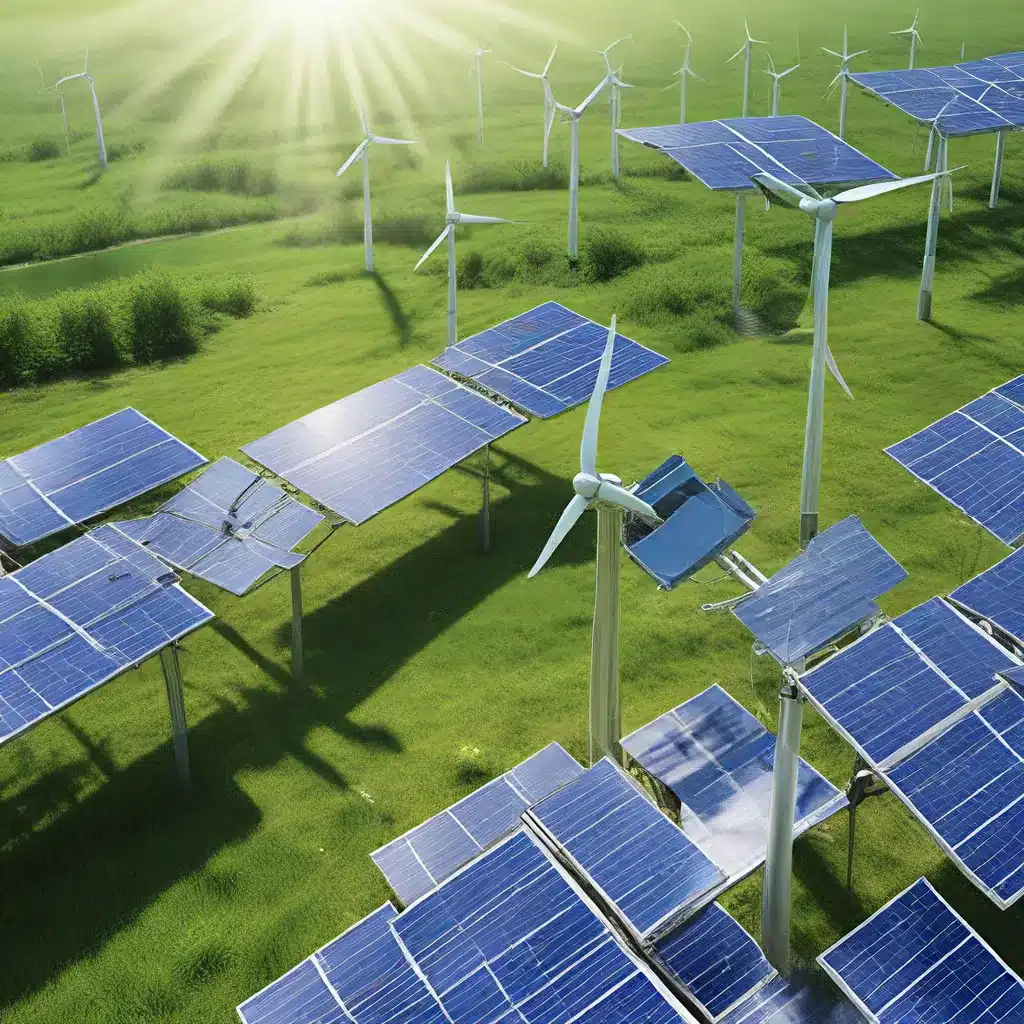
In an era where the climate crisis has reached a critical juncture, the need for innovative solutions has never been more pressing. Sensor networks, a cornerstone of the Internet of Things (IoT) revolution, hold immense potential to contribute to the fight against climate change. By harnessing the power of renewable energy and leveraging the capabilities of machine learning (ML), these interconnected systems can transform the way we approach environmental monitoring, energy management, and sustainable development.
Powering the IoT Ecosystem: The Rise of Renewable Energy
At the heart of the sensor network revolution lies the challenge of powering these distributed, energy-hungry devices. Traditionally, sensor nodes have relied on battery-powered or wired solutions, which can be costly, inefficient, and environmentally unsustainable. However, the advent of renewable energy technologies has opened up a new frontier, allowing sensor networks to operate in a more eco-friendly and self-sustaining manner.
Recent studies have demonstrated the immense potential of integrating solar, wind, and energy harvesting techniques into sensor network designs. These innovative approaches not only reduce the carbon footprint of sensor deployments but also address the issue of limited battery life, a perennial challenge in IoT applications.
By harnessing the abundant and renewable energy sources available in their surrounding environments, sensor nodes can achieve extended operational lifespans and greater energy autonomy. This, in turn, enables the deployment of sensor networks in remote or off-grid locations, where traditional power sources may be scarce or inaccessible.
Unlocking the Potential of Machine Learning in Sensor Networks
Alongside the advancements in renewable energy, the confluence of sensor networks and machine learning has ushered in a new era of data-driven decision-making and predictive analytics. ML algorithms, with their unparalleled ability to analyze vast datasets, identify patterns, and make accurate predictions, have emerged as a game-changer in the realm of sensor networks and climate change mitigation.
Sensor networks, equipped with a myriad of environmental sensors, collect a wealth of data on parameters such as temperature, humidity, air quality, and weather patterns. By integrating ML models into these sensor systems, we can unlock the full potential of this data, transforming it into actionable insights that inform evidence-based strategies for addressing the climate crisis.
ML-powered sensor networks can be leveraged to optimize the performance and efficiency of renewable energy systems, enabling more effective energy management and grid optimization. Additionally, these intelligent systems can be deployed in precision agriculture, ecosystem monitoring, and disaster response, providing invaluable data to support sustainable land use and ecosystem conservation efforts.
Ensuring Secure and Resilient Sensor Networks
As sensor networks become increasingly integral to our climate resilience strategies, the importance of cybersecurity and data privacy cannot be overstated. The proliferation of IoT devices and the vast amounts of sensitive data they collect have made sensor networks a prime target for cyber threats, ranging from data breaches to malicious attacks that can disrupt critical infrastructure.
To mitigate these risks, sensor network designers must adopt a holistic approach to security, incorporating robust encryption protocols, access control mechanisms, and resilient network topologies. Blockchain technology, with its inherent security features and decentralized nature, has emerged as a promising solution for enhancing the integrity and traceability of sensor data.
Moreover, the integration of edge computing and fog computing architectures in sensor networks can improve data processing and response times, reducing the risks associated with centralized cloud-based systems. By distributing intelligence and processing power closer to the data sources, these edge-centric approaches enhance the resilience and responsiveness of sensor networks, ensuring that critical climate-related data is continuously monitored and analyzed.
Towards a Sustainable and Resilient Future
As we navigate the complexities of the climate crisis, the convergence of sensor networks, renewable energy, and machine learning holds immense promise. By harnessing these innovative technologies, we can unlock a future where sensor-driven insights empower informed decision-making, renewable energy powers resilient IoT infrastructures, and secure, decentralized systems safeguard our environmental data.
Sensor networks have the potential to become the lynchpin of a sustainable and resilient future, serving as the eyes and ears of our planet, monitoring environmental changes, and informing evidence-based strategies for climate change mitigation. By embracing this transformative potential, we can forge a path towards a greener, more resilient, and more technologically advanced world, one that is better equipped to tackle the urgent challenges of our time.